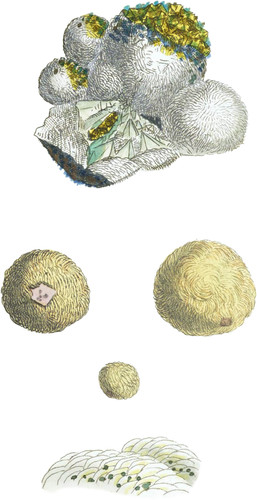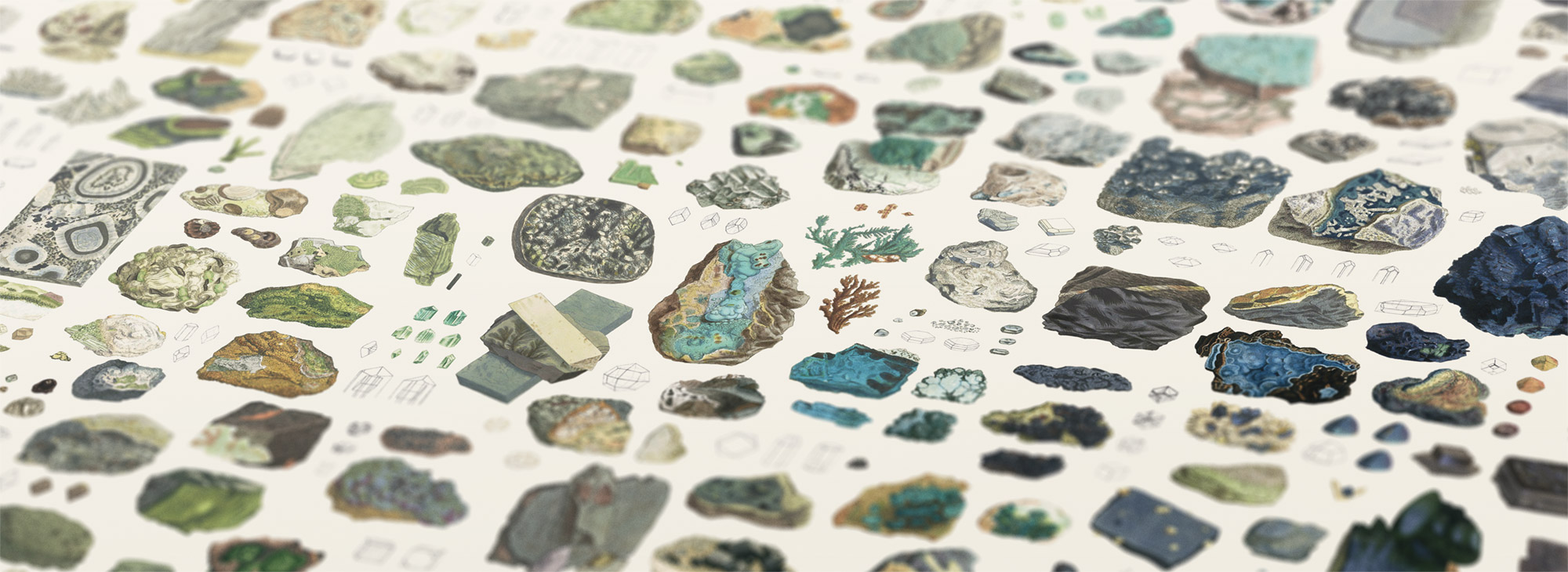 Enlarge
Enlarge
British Mineralogy
Sulphate of Barytes
- Class 2. Earths.
- Order 1. Homogeneous.
- Gen. 6. Barytes.
- Spec. 2. Sulphate.
- Div. Imitative.
This variety of sulphate of barytes has obtained the name of cauk among the miners; for what reason I do not know. It has also been called terra ponderosa. The sort here figured is very frequent in Ecton mine, Staffordshire. It is not uncommon in other places, but of a less regular sphærical form. It is generally accompanied by carbonate of lime, fluor, galæna, blend, iron and copper pyrites, &c., and is most frequently white. Sometimes it is coloured by oxide of iron, and is then either yellowish, or mostly reddish. The specimen represented in the upper figure came from Ecton mine, and is accompanied by calcareous spar and pyrites of various forms and hues. The internal structure is confusedly laminated, showing signs of crystallization, arranged in the form of a sphere; these laminæ are extremely close, and often confused, or so thin that no determinate form can be made out, having only the appearance of segments of circular plates, sticking edgeways by the side of each other: see the bottom figure: at other times they the edges of plates with the faces usual to tabular sulphate of barytes: see tab 72. The whole are sometimes attached by a greater or smaller base, so as to be nearly detached spheres; at other times only half a sphere or less.
At Buxton, Derbyshire, however, detached balls are found, not far under the surface of the common earth: see the three figures in the middle. They seem to be formed among loam, and partake of an ochraceous hue; the edges are frequently more separated, and less regularly rounded. They have occasionally attached to them single cubic crystals of fluor in a decomposing state; of which more hereafter.
These are somewhat related to the celebrated Bolognian stone, which shines like phosphorus in the dark; and if heated red hot in a common fire, it is said to assume the same property. They are allied also to the liver-stone*, which has its name from its hepatic scent, derived from sulphret of ammonia or liver of sulphur. Varieties are found in Great Britain, which, when rubbed, give nearly the odour of stink-stone: see tab. 38.
- * Found in Adrarium, in Scania.

